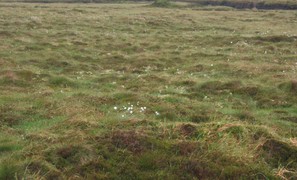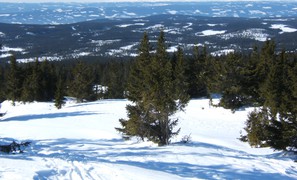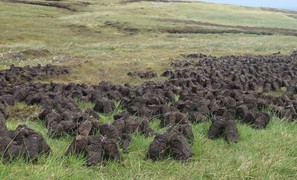Services European forests provide to society will decline, no matter what

The tree composition of European forests will change in response to global warming. The optimal conditions for Mediterranean tree species will shift northwards into the temperate zone, whereas the climatic suitability of temperate species will move into the boreal zone at the expense of boreal species.
The velocity of climate change outpaces the abilities of tree species to migrate north. As a result, in future decades, the distribution of tree species will no longer match climatic zones and the quality and diversity of forests will decline. Detrimental cascading effects on wildlife habitats and biodiversity will propagate through networks of ecological interactions, further reducing forests’ tolerance to climate-driven disturbances such as pest, fires, and invasive species. What’s more, as forests change, the ecosystem services these forests provide to society will also change.
These ecosystem services include providing food and medicine, and wood for construction and furniture, for fuel and for pulp in the paper industry, contributing to cultural values and recreation, and protecting the soil from erosion and degradation. When forests are affected by climate change, these ecosystem services decline. This potential impact of climate change has been studied for the entire European land area. In addition, the researchers looked at the potential of human assistance in tree migration so forests can adapt to climate change faster, and the loss of ecosystem services can be limited.
Two scenarios: the natural and the human-assisted way
In their study, researchers looked at current and future (2035, 2065, 2095) distribution of 66 tree species across Europe under a moderate and high-end scenario of climate change. They focused on two scenarios for the future dispersal of tree species across Europe. In the first scenario they looked at future tree distribution under the assumption that seeds are dispersed in a natural way, without human assistance. In the second scenario they assumed human assistance in tree migration would lead to unlimited dispersal of seeds, closely matching the northward shift of climatic zones. In fact, this scenario assumes that species will be able to move to, and colonize, all areas of future climatic suitability, and thus reflects the climatic potential of species dispersal in the case of forestry-based assisted tree migration.
The natural way: a loss of ecosystem services
The results indicate that, without assisted migration, the provision of ecosystem services by European forests would decrease on average by 15% or 23% by the end of the century under a moderate or high-end scenario of climate change, respectively. The situation is quite different for the Mediterranean, though, where a decline of ecosystem services is projected of 52% (70%) under a moderate (high-end) scenario of climate change.
Human-assisted tree migration: still decline in the South
If we do assist tree migration, the dispersal of European tree species will experience substantial changes, following the rapid shifts of climatic zones. As a result, the decline of ecosystem services can be limited to 10% (15%) on average in Europe. In the Alpine and Boreal regions, forest ecosystem services may actually increase compared to the current situation. Here, global warming could permit tree species colonization into new territories previously not climatically suitable. In most of Central Europe, forest ecosystem services can be maintained near their current level, especially under a moderate scenario of climate change. Services will still be lost in the Mediterranean, however, by 33% (54%) under a moderate (high-end) scenario of climate change.
On the positive side, tree migration strategies are effective under both a moderate and high-end scenario of climate change. This shows that this approach is a powerful tool for forest management: tree species migration and management can be planned over the next decades to target a certain forest composition by the end of the century, no matter how global warming will develop.
Ecological point of view
One might argue – from an ecological point of view – against the deliberate translocation of species beyond their current occupied ranges. The authors of this study stress, however, that assisted migration is nothing new. It has already been common practice for centuries, millennia even. European forests have been managed through clearance to create croplands and pastures. They have been used for intensive wood harvesting for fuel and construction. According to them, ‘currently, only 2.2% of the forests in Europe are classified as undisturbed by man, 3.8% are classified as plantations, and 94 % as semi-natural’. Besides, the fact that European forests are highly fragmented by human settlements and infrastructure might hamper the natural dispersal of most European tree species.
It’s time to act
The authors conclude that natural dispersal will probably play a minor role in future tree distribution across Europe. Assisted migration – defined as the ‘deliberate human-mediated movement of species into areas where their environmental needs better match the future climatic conditions’ – has been and will be key to the adaptation of European forests to climate change. Knowledge on effective assisted tree migration, to preserve forests’ ecosystem services for European economies and societies, is highly relevant as the European Union intends to plant 3 billion trees in Europe by 2030. The experts urge to start quickly, ‘because forests take decades and not years to adapt to climate change’.
Source: Mauri et al., 2023. Global Environmental Change 80.






